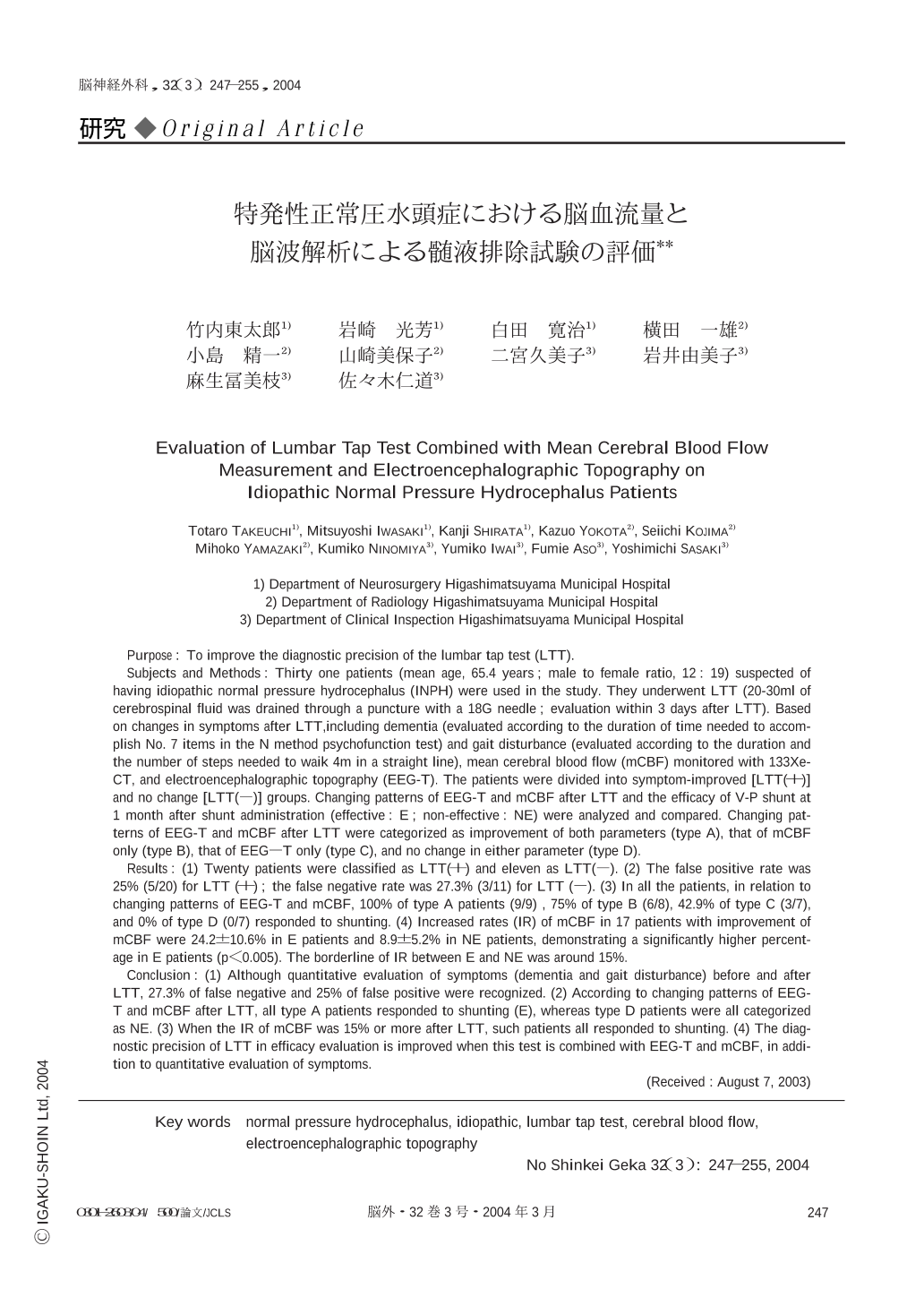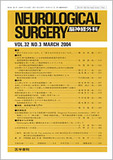Japanese
English
- 有料閲覧
- Abstract 文献概要
- 1ページ目 Look Inside
Ⅰ.はじめに
現在,特発性正常圧水頭症(idiopathic normal pressure hydrocephalus:INPH)のシャント効果判定として髄液排除試験(lumbar tap test : LTT)が広く施行されているが1,2,4,5,7,9,11,15-19,21),高い擬陰性率や不明確な効果判定方法等の克服が今後の課題とされている.今回著者らはLTTの診断精度をより向上させるため,症状の定量的評価の加えて脳血流量測定と脳波解析による判定を行い,その効果について検討したので報告する.
Purpose : To improve the diagnostic precision of the lumbar tap test (LTT).
Subjects and Methods : Thirty one patients (mean age,65.4 years ; male to female ratio,12 : 19) suspected of having idiopathic normal pressure hydrocephalus (INPH) were used in the study. They underwent LTT (20-30ml of cerebrospinal fluid was drained through a puncture with a 18G needle ; evaluation within 3 days after LTT). Based on changes in symptoms after LTT,including dementia (evaluated according to the duration of time needed to accomplish No. 7 items in the N method psychofunction test) and gait disturbance (evaluated according to the duration and the number of steps needed to waik 4m in a straight line),mean cerebral blood flow (mCBF) monitored with 133Xe-CT,and electroencephalographic topography (EEG-T). The patients were divided into symptom-improved [LTT(+)] and no change [LTT(-)] groups. Changing patterns of EEG-T and mCBF after LTT and the efficacy of V-P shunt at 1 month after shunt administration (effective : E ; non-effective : NE) were analyzed and compared. Changing patterns of EEG-T and mCBF after LTT were categorized as improvement of both parameters (type A),that of mCBF only (type B),that of EEG‐T only (type C),and no change in either parameter (type D).
Results : (1) Twenty patients were classified as LTT(+) and eleven as LTT(-). (2) The false positive rate was 25% (5/20) for LTT (+) ; the false negative rate was 27.3% (3/11) for LTT (-). (3) In all the patients,in relation to changing patterns of EEG-T and mCBF,100% of type A patients (9/9) ,75% of type B (6/8),42.9% of type C (3/7),and 0% of type D (0/7) responded to shunting. (4) Increased rates (IR) of mCBF in 17 patients with improvement of mCBF were 24.2±10.6% in E patients and 8.9±5.2% in NE patients,demonstrating a significantly higher percentage in E patients (p<0.005). The borderline of IR between E and NE was around 15%.
Conclusion : (1) Although quantitative evaluation of symptoms (dementia and gait disturbance) before and after LTT,27.3% of false negative and 25% of false positive were recognized. (2) According to changing patterns of EEG-T and mCBF after LTT,all type A patients responded to shunting (E),whereas type D patients were all categorized as NE. (3) When the IR of mCBF was 15% or more after LTT,such patients all responded to shunting. (4) The diagnostic precision of LTT in efficacy evaluation is improved when this test is combined with EEG-T and mCBF,in addition to quantitative evaluation of symptoms.

Copyright © 2004, Igaku-Shoin Ltd. All rights reserved.


